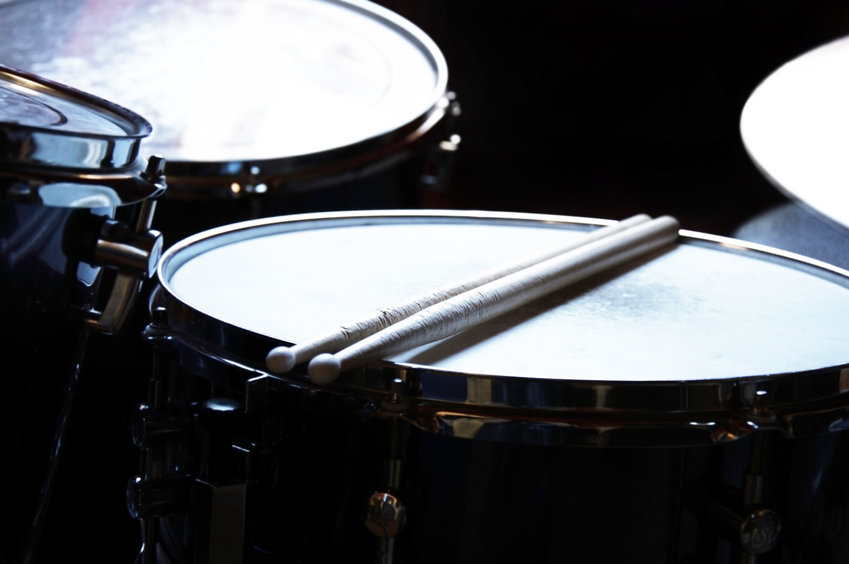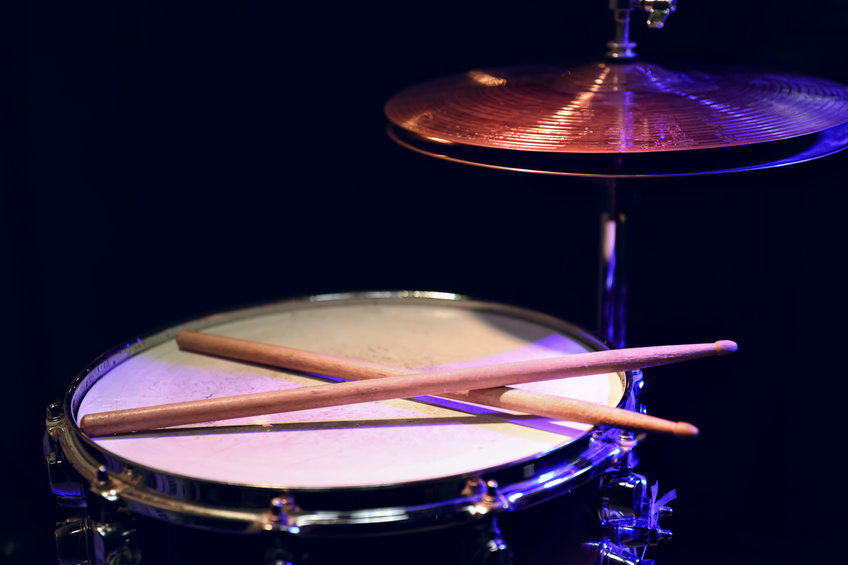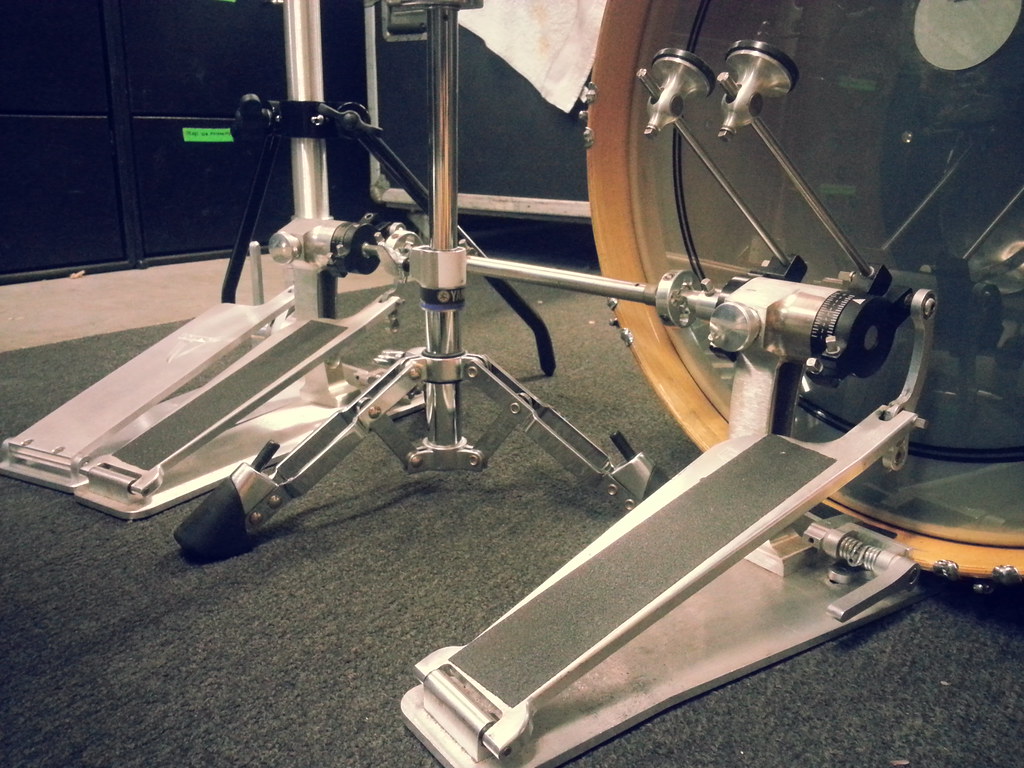How to Play The Moeller Technique – Drumming Power and Endurance

The Moeller technique is a great drumming method that can swiftly improve your skills and teach you how to save energy while drumming. The technique is based on using a whipping motion with your drumstick, which builds speed, power, and, most importantly, control.
Contents
Moeller Technique at a Glance
- The Moeller technique enhances drumming skills by emphasizing a whipping motion for speed, power, and control.
- It relies on a fulcrum to reduce stress on wrists, arms, and shoulders.
- The technique comprises four strokes: full, down, tap, and upstrokes.
- Practice on a pad initially for fluid motion development.
- The Moeller method improves efficiency, especially during big strokes.
- It enhances snare dynamics with down strokes for accents and upstrokes for position.
- Utilize rudiments for incorporating the Moeller technique into drumming.
- Found by Sanford A. Moeller, detailed in ‘The Art of Snare Drumming,’ the Moeller method revolutionized drumming. Jim Chapin further popularized it.
Before diving in, look at this video by Jim Chapin to see the Moeller method in action. Jim Chapin was a drumming great and one of the main pioneers of the Moeller technique.
How to Play The Moeller Technique
The entire essence of the Moeller technique lies behind performing a whip-like motion and controlling the rebound of your drumstick. As you may have learned from Science class, the fulcrum is a point around which a thing pivots. Using the fulcrum greatly reduces the stress on your wrists, arms, and shoulders. It can make you a much more efficient drummer.
While playing big, powerful strokes with this technique, you use your shoulder, elbow, and wrist in one continuous whip-like motion to get a powerful stroke. The wrist motion is similar to dribbling a basketball.
Watch the accomplished drummer and instructor, Bruce Becker, demonstrate the Moeller technique.
Basically, the Moeller method consists of four strokes. The full stroke, the down stroke, the tap stroke, and the upstroke. Each has its own basic movements. When you understand them all, then they will work fluidly with each other.
Although, it’s best you start practicing this technique on a practice pad since it might take some time to develop the motions with fluidity. Also, make sure to check your surroundings. I broke a lightbulb over my head with my drumstick the first time I practiced the Moeller stroke!
The Full Stroke
The full stroke involves a powerful downward stroke, rebounded after the impact, on the surface. The stick goes from an initial vertical position onto the surface and back to the starting point. This prepares you to play the next stroke without expending extra energy.
The power in the full stroke comes from the entire movement rather than just your wrists or forearm movements. When you play triplets or single-stroke rolls at higher tempos, this stroke makes it less taxing on you.
The Down Stroke
The down stroke is another big movement in the Moeller method. It is similar to the full stroke in its initial phase. That is hitting the surface in a whipping motion. However, the goal of a down stroke isn’t to return the stick to its original position.
You want the stick to stay just a few inches above the drum. This is achieved by snapping your fingers as the stick goes down, resulting in a loud, snappy sound or an accent.
The down stroke is generally used on the snare for the upbeat and backbeat. It is also used for crash hits.
The Up Stroke
The upstroke is opposite to the downstroke. You start a couple of inches from the surface and end in a high, vertical position after hitting it. It is a lighter hit but heavily involves an upward wrist movement.
The purpose behind the upstroke is to get you into the position for a full or downstroke with as little effort as possible.
The Tap Stroke
The tap stroke starts just a few inches from the drum and is mainly used for very gentle ghost notes. You tap the surface with the stick and return it to the same lower position.
The focus of tap strokes isn’t to make an accented sound but to add regular strokes or ghost notes. It is also very useful for rolls with an accent.
At first, the Moeller technique can seem a bit daunting. However, the key is to start slowly in a systematic way and speed your way up. Yes, it does take time to develop, and yes, it can be frustrating. But when you do nail it, it all becomes worth it.
Remember that speed comes eventually. Starting, your energy should go into playing these strokes with complete control.
Practicing the Moeller Technique
How do you incorporate the Moeller technique into your drumming? The answer is rudiments—the building blocks of drumming.
You can practice the Moeller Technique in three different parts. The two-note Moeller, three-note Moeller, and four-note Moeller. For all the exercises, start slowly with a low BPM and increase the speed as you feel more comfortable.
The four-note Moeller method means you hit on the eighth and sixteenth notes to create the four-note rhythm. So, you will hit the downstroke, two tap rebound strokes, and follow it up with an upstroke. The most challenging aspect of this exercise lies in the execution of the second rebound stroke. It requires a swift and relaxed action, ensuring that your wrist maintains its undulating motion to facilitate the subsequent upstroke.
The three-note Moeller method consists of a downstroke, a tap, and an upstroke. The proper order for these strokes is as follows: start with the downstroke, follow with the rebound, and conclude with the upstroke. The triplet Moeller technique is slightly easier than the rest.
To effectively execute the two-note Moeller technique, you aim to harness the impact of both the downward and upward strokes while avoiding reliance on the rebound. This can be slightly challenging as the wrist motion must be fast. Your wrist has to be very relaxed during the hits.
Learning the Moeller technique takes your rudiments to the next level. It gives a certain clarity to them, and when you speed up, you maintain that clarity.
You can also practice in different ways. For your single strokes, play steady full strokes. To develop them better, play accents using a down stroke and keep changing the level of your sticks’ height.
Your doubles become combinations of a full stroke and a downstroke on each hand. You can also experiment with an upstroke followed by a downstroke. This will give a nice, even-sounding double-stroke roll at higher speeds.
The Moeller technique also benefits your paradiddles. Play the first note as a down stroke and the other three as tap strokes. It can take a bit of getting used to, but it’s worth it in the end!
Using the Moeller Method on the Drum Set
The Moeller technique can be utilized in grooves or as part of fills. You can maintain a steady pulse on the hi-hat with down and up strokes and use the down stroke for strong snare shots. You can also add ghost notes as well. It also improves the speed of your fills.
Like on a drum pad, you want to start slowly and increase speed over time. The Moeller technique will give you better speed, control, and smoothness when you explore the kit. It can also really bring out the dynamics of your playing.
Watch this video from the 11:53 mark for ideas.
Disadvantages of the Moeller Technique
The main disadvantage of the Moeller technique is that it is often overused by drummers at a basic level. Drummers can get lazy with the efficiencies of the Moeller technique, and they can rely on specific basic movements of the Moeller stroke without practicing them more flexibly. Of course, this isn’t a disadvantage of the technique per se, but more of an indirect issue with many drummers who learn the technique.
The tap stroke of the Moeller technique is also very dependent on the rebound of the surface. This might make it difficult to transfer it on objects with little rebound, like lower toms.
Using other techniques like finger control can also help. But practice them both enough so you can easily switch back and forth.
Origins of the Moeller Technique
The Moeller method is credited to Sanford A. Moeller, born in 1878. He observed Civil War drummers could play powerful strokes for extended periods without getting tired. Being thoroughly impressed, he started to study the technique and wrote ‘The Art of Snare Drumming,’ also known as the ‘Moeller book.’
In 1938, Sanford passed the Moeller method to his pupil Jim Chapin. Since then, Chapin spent his life traveling and educating the masses. Thanks to his efforts, the Moeller technique reached the status it deserved.
Summary
Overall, the Moeller technique is an incredible tool to have as a drummer. Practice all four strokes on both hands with patience. Don’t worry about going fast initially; the speed will come with good technique and practice. A car never starts directly in 5th gear!
Once you get a hang of the Moeller technique, your speed and control will reach new limits. Then, make sure to integrate it into your playing in the best and most tasteful way possible.








Great article outlining the fundamentals motions of the Moeller Technique! I wrote an article that elaborates on that and describes the 3 basic exercises taught by Jim Chapin and how you can put in into practise: https://musiprof.com/blog/3-fundamental-moeller-technique-exercises/
Nice article Elijah – thanks for sharing.